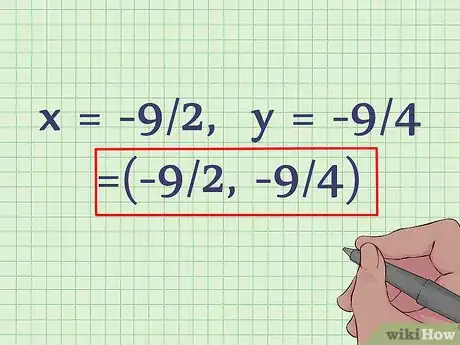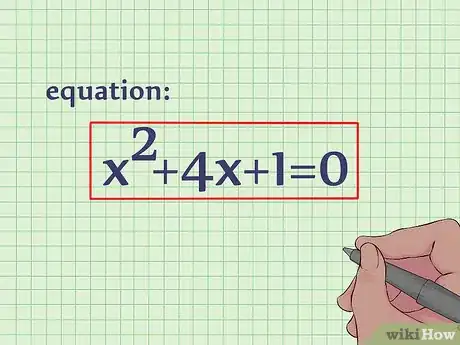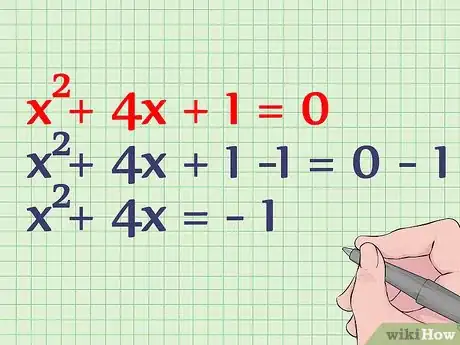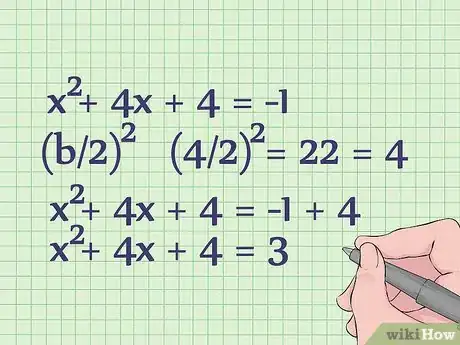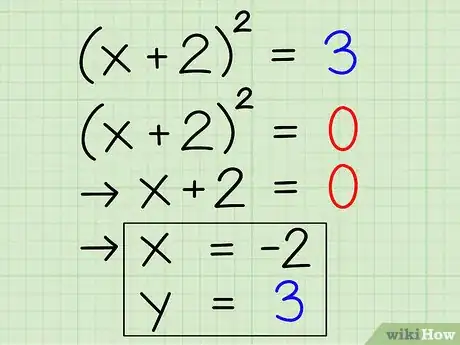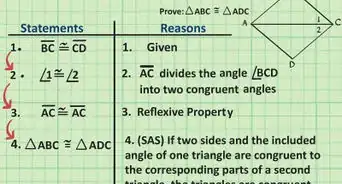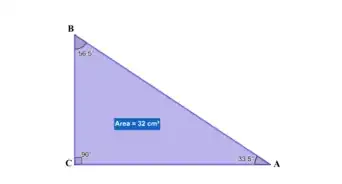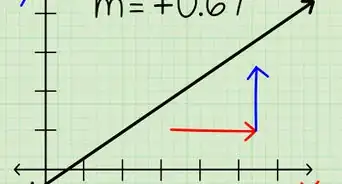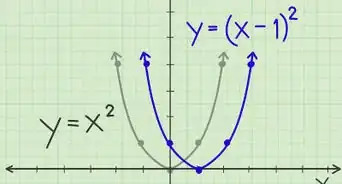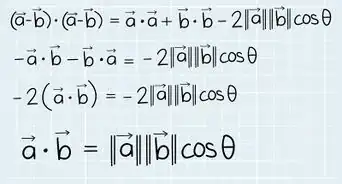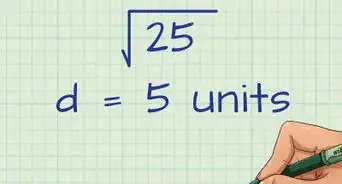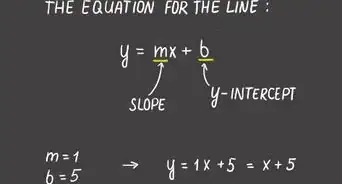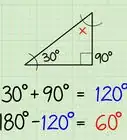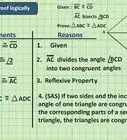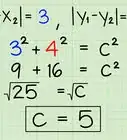This article was co-authored by David Jia. David Jia is an Academic Tutor and the Founder of LA Math Tutoring, a private tutoring company based in Los Angeles, California. With over 10 years of teaching experience, David works with students of all ages and grades in various subjects, as well as college admissions counseling and test preparation for the SAT, ACT, ISEE, and more. After attaining a perfect 800 math score and a 690 English score on the SAT, David was awarded the Dickinson Scholarship from the University of Miami, where he graduated with a Bachelor’s degree in Business Administration. Additionally, David has worked as an instructor for online videos for textbook companies such as Larson Texts, Big Ideas Learning, and Big Ideas Math.
This article has been viewed 1,730,223 times.
The vertex of a quadratic equation or parabola is the highest or lowest point of that equation. It lies on the plane of symmetry of the entire parabola as well; whatever lies on the left of the parabola is a complete mirror image of whatever is on the right. If you want to find the vertex of a quadratic equation, you can either use the vertex formula, or complete the square.
Steps
Using the Vertex Formula
-
1Identify the values of a, b, and c. In a quadratic equation, the term = a, the term = b, and the constant term (the term without a variable) = c. Let's say you're working with the following equation: '. In this example, = 1, = 9, and = 18.[1]
-
2Use the vertex formula for finding the x-value of the vertex. The vertex is also the equation's axis of symmetry. The formula for finding the x-value of the vertex of a quadratic equation is . Plug in the relevant values to find x. Substitute the values for a and b. Show your work:Advertisement
-
3Plug the value into the original equation to get the value. Now that you know the value, just plug it in to the original formula for the value. You can think of the formula for finding the vertex of a quadratic function as being . This just means that to get the value, you have to find the value based on the formula and then plug it back into the equation. Here's how you do it:
-
4Write down the and values as an ordered pair. Now that you know that , and , just write them down as an ordered pair: .[2] The vertex of this quadratic equation is . If you were to draw this parabola on a graph, this point would be the minimum of the parabola, because the term is positive.
Completing the Square
-
1Write down the equation. Completing the square is another way to find the vertex of a quadratic equation. For this method, when you get to the end, you'll be able to find your x and y coordinates right away, instead of plugging the x coordinate back in to the original equation. Let's say you're working with the following quadratic equation: .[3]
-
2Divide each term by the coefficient of the term. In this case, the coefficient of the term is 1, so you can skip this step. Dividing each term by 1 would not change anything. Dividing each term by 0, however, will change everything.[4]
-
3Move the constant term to the right side of the equation. The constant term is the term without a coefficient. In this case, it is 1. Move 1 to the other side of the equation by subtracting 1 from both sides. Here's how you do it:[5]
-
4Complete the square on the left side of the equation. To do this, simply find and add the result to both sides of the equation. Plug in 4 for , since is the b-term of this equation.[6]
-
. Now, add 4 to both sides of the equation to get the following:
-
. Now, add 4 to both sides of the equation to get the following:
-
5Factor the left side of the equation. Now you will see that is a perfect square.[7] It can be rewritten as
-
6Use this format to find the and coordinates. You can find your coordinate by simply setting equal to zero.[8] So when , what would have to be? The variable would have to be -2 to balance out the +2, so your coordinate is -2. Your y-coordinate is simply the constant term on the other side of the equation. So, . You can also do a shortcut and just take the opposite sign of the number in parentheses to get the x-coordinate. So the vertex of the equation .
Expert Q&A
-
QuestionWhat is a shortcut to find the vertex?
 David JiaDavid Jia is an Academic Tutor and the Founder of LA Math Tutoring, a private tutoring company based in Los Angeles, California. With over 10 years of teaching experience, David works with students of all ages and grades in various subjects, as well as college admissions counseling and test preparation for the SAT, ACT, ISEE, and more. After attaining a perfect 800 math score and a 690 English score on the SAT, David was awarded the Dickinson Scholarship from the University of Miami, where he graduated with a Bachelor’s degree in Business Administration. Additionally, David has worked as an instructor for online videos for textbook companies such as Larson Texts, Big Ideas Learning, and Big Ideas Math.
David JiaDavid Jia is an Academic Tutor and the Founder of LA Math Tutoring, a private tutoring company based in Los Angeles, California. With over 10 years of teaching experience, David works with students of all ages and grades in various subjects, as well as college admissions counseling and test preparation for the SAT, ACT, ISEE, and more. After attaining a perfect 800 math score and a 690 English score on the SAT, David was awarded the Dickinson Scholarship from the University of Miami, where he graduated with a Bachelor’s degree in Business Administration. Additionally, David has worked as an instructor for online videos for textbook companies such as Larson Texts, Big Ideas Learning, and Big Ideas Math.
Academic Tutor Average out the 2 intercepts of the parabola to figure out the x coordinate. Think of it this way—a parabola is symmetrical, U-shaped curve. So, if you have 2 x intercepts on the left and right sides of this parabola, their average will give you the x coordinate of the vertex, which is directly in the middle. Once you've figured out the x coordinate, you can plug it into the regular quadratic formula to get your y coordinate.
Average out the 2 intercepts of the parabola to figure out the x coordinate. Think of it this way—a parabola is symmetrical, U-shaped curve. So, if you have 2 x intercepts on the left and right sides of this parabola, their average will give you the x coordinate of the vertex, which is directly in the middle. Once you've figured out the x coordinate, you can plug it into the regular quadratic formula to get your y coordinate. -
QuestionHow do I find x and y intercepts of a parabola?
 DonaganTop AnswererFind the y-intercept by setting x equal to zero and solving the equation for y. Find the x-intercept by setting y equal to zero and solving for x.
DonaganTop AnswererFind the y-intercept by setting x equal to zero and solving the equation for y. Find the x-intercept by setting y equal to zero and solving for x. -
QuestionHow can I graph 3(x-1)squared +4 on a ti-84 calculator?
 Community AnswerPress the "y=" button. Then,type in "3(x+1)^2+4)". Lastly, hit "zoom," then "0" to see the graph.
Community AnswerPress the "y=" button. Then,type in "3(x+1)^2+4)". Lastly, hit "zoom," then "0" to see the graph.
Warnings
- Show and check your work!⧼thumbs_response⧽
- Make sure that you know what a, b, and c are - if you don't, the answer will be wrong.⧼thumbs_response⧽
-
⧼thumbs_response⧽
Things You'll Need
- Math graph pad or computer screen
- Calculator
References
- ↑ http://www.youtube.com/watch?v=0vSVCN3kJTY
- ↑ https://socratic.org/questions/how-do-you-find-the-vertex-of-a-quadratic-equation
- ↑ http://www.mathsisfun.com/algebra/completing-square.html
- ↑ https://www.cuemath.com/geometry/vertex-of-a-parabola/
- ↑ http://earthmath.kennesaw.edu/main_site/review_topics/vertex_of_parabola.htm
- ↑ https://www.cuemath.com/geometry/vertex-of-a-parabola/
- ↑ https://www.cuemath.com/geometry/vertex-of-a-parabola/
- ↑ https://www.cuemath.com/geometry/vertex-of-a-parabola/
About This Article
The vertex of the graph of a quadratic function is the highest or lowest possible output for that function. If you’re looking at a graph, the vertex would be the highest or lowest point on the parabola. The easiest way to find the vertex is to use the vertex formula. If your equation is in the form ax^2 + bx + c = y, you can find the x-value of the vertex by using the formula x = -b/2a. So, if you’re working with the equation 2x^2 + 4x + 9 = y, a = 2, b = 4, and c = 9. Plug the a and b values into the vertex formula to find the x value for the vertex, or the number you’d have to input into the equation to get the highest or lowest possible y. In this example, x = -4/2(2), or -1. Once you have the x value of the vertex, plug it into the original equation to find the y value. In our example, 2(-1)^2 + 4(-1) + 9 = 3. So, the x-value of the vertex is -1, and the y-value is 3. Describe the vertex by writing it down as an ordered pair in parentheses, or (-1, 3). For this particular equation, the vertex is the lowest point, since the a-value is greater than 0. Parabolas with a negative a-value open downward, so the vertex would be the highest point instead of the lowest. You can also figure out the vertex using the method of completing the square. This involves re-expressing the equation in the form of a perfect square plus a constant, then finding which x value would make the squared term equal to 0. For example, say you are trying to find the vertex of 3x^2 + 6x – 2 = y. Add 2 to both sides to get the constant out of the way. This will give you 3x^2 + 6x = y + 2. Then, factor out the coefficient of the first term to get 3(x^2 + 2x) = y + 2. Now, plug the coefficient of the b-term into the formula (b/2)^2. In this case, (2/2)^2 = 1. Multiply the result by the coefficient of the a-term and add the product to the right side of the equation. Also add the result to the inside of the parentheses on the left side. In our example, this will give you 3(x^2 + 2x + 1) = y + 2 + 3(1), which you can simplify to 3(x^2 + 2x + 1) = y + 5. Finally, factor the left side of the equation to get 3(x + 1)^2 = y + 5. Subtract 5 from both sides of the equation to get 3(x + 1)^2 – 5 = y. You can now reformat your quadratic equation into a new formula, a(x + h)^2 + k = y. To find the vertex, set x = -h so that the squared term is equal to 0, and set y = k. In this particular case, you would write 3(x + 1)^2 + (-5) = y. To make x = -h, input -1 as the x value. Then you’ll get 3(-1 + 1)^2 – 5 = y, which simplifies to 3(0) – 5 = y, or -5=y. Write the vertex as (-1, -5). If you want to learn how to find the vertex of the equation by completing the square, keep reading the article!
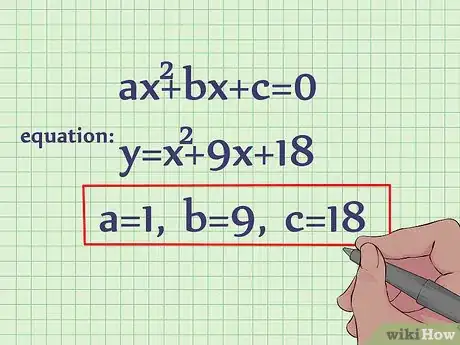






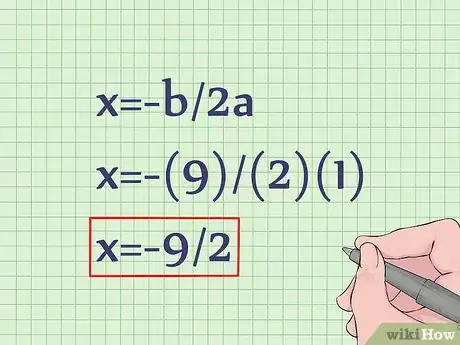



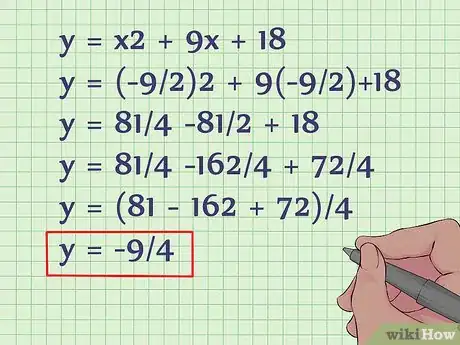

![{\displaystyle (x,y)=\left[({\frac {-b}{2a}}),f({\frac {-b}{2a}})\right]}](./images/1564548993-2164b87565199a92a8a12e0e2e98b449ebff3ab2.webp)





